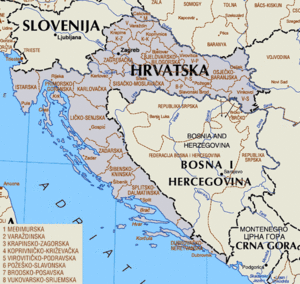Marine Biotechnology in Croatia
From Coastal Wiki
Go back to: Home > Strategies, Policies and Programmes > European countries
Overarching science strategies, plans and policies
There are no specific Marine Biotechnology strategies, plans or policies in Croatia. Relevant Croatian science strategies are described in different documents, including
- Ministry of Science, Education and Sports: “Strategic plan 2012-2014” describes the overall Croatian strategic short-term measures in education, science and sports.[1]
- Ministry of Agriculture, Fisheries and Rural regions: “Strategic plan 2012-2014” describes the overall Croatian short-term measures in agriculture, fisheries and aquaculture, including biotechnology issues.[2]
- The Croatian “Marine strategy” is currently under development but will become legally binding in the future (details defined by governmental “Act on establishing a framework for protecting the environment of the Republic of Croatia”)[3].
Research funding schemes and programmes
- Ministry of Science, Education and Sports funds research and innovation projects, all research topics. [4]
- Croatian Foundation for Science funds research and innovation projects, all research topics.[5]
- The Business Innovation Centre of Croatia (BICRO), central institution in the national innovation system for supporting innovation and technology advancement.[6]
- IPA program (Instruments for Pre-accession Assistance) has different funding lines: for Adriatic cross-board cooperation[7], operative competitiveness [8], IPARD. [9]
- Other EU Cohesive Funds, will be available from 2014 (if Croatia enters the EU).
- As part of the stabilisation process and Croatia’s accession to the European Union, the Government is promoting a shift to a knowledge-based economy. Croatia has established a national Science and Technology Action plan for 2006-20104. Biotechnology (agri-food / healthcare / industrial) has been recognised as one of the priorities which will contribute to the development of Croatian society. Currently, 55 biotechnology projects are funded by the Government.[10]
Research priorities
Relevant research priorities adopted by National Council for Science:
- Food, Agriculture, Fisheries and Biotechnology
- Health
- Environment and climatic changes
Strategic documents
- At this stage there are no specific strategic documents devoted for the marine biotechnology only.
- State of art biotech Croatia.[11][12]
Infrastructures and coordination and support capacities / initiatives
- Faculty of Food Technology and Biotechnology, University of Zagreb: Academic institution which performs research activities on biotechnology, including marine biotechnology.[13]
- A few research organisations, like Institute Ruđer Bošković and Institute of Oceanography and Fisheries, are performing very limited research activities related to marine biotechnology.
- Biotechnological Park Varaždin: Incubation park near the city of Varaždin where biotechnological, life sciences and hi-tech companies may set up and operate in an innovative, inspirational, safe and secure environment. [14]
- In 2012, Croatia operates 7 local/coastal vessels from 10,5 m to 31,35 (Bios, Hydra, Nase More, navicula, Shamal, Triton, Vila Velebita), 1 regional vessels of 45,50 (Palagruza), registered at the European Research Vessels Infobase [15]
- In 2012, Croatia maintains about 1 large marine research equipments registered in the European large Exchangeable instruments database [15]
- Key aquaculture experimental and research facilities in Croatia include
- Laboratory of Aquaculture (Institute of oceanography and fisheries)
- Fish culture unit (University of Dubrovnik, Department of Aquaculture)
Major initiatives
n/a
References
- ↑ http://public.mzos.hr/Default.aspx?art=10679&sec=1933
- ↑ http://www.mps.hr/UserDocsImages/strategije/Strateški%20plan%20MPRRR%202012-2014%20verzija1.pdf
- ↑ http://narodne-novine.nn.hr/clanci/sluzbeni/2011_11_136_2724.html
- ↑ http://www.mzos.hr
- ↑ http://www.hrzz.hr
- ↑ http://www.bicro.hr
- ↑ http://www.adriaticipacbc.org
- ↑ http://public.mzos.hr/Default.aspx?sec=3249
- ↑ http://www.mps.hr/ipard/UserDocsImages/dokumenti/IPARD/IPARD_ENGLESKI_2011.pdf
- ↑ http://www.bio-economy.net/bioeconomy/member_states/croatia/files/workshop_files/draft_summary_croatia.pdf
- ↑ http://www.biotechgate.com/app/documents/14allbio/croatia.pdf
- ↑ http://gain.fas.usda.gov/Recent%20GAIN%20Publications/Agricultural%20Biotechnology%20Annual_Zagreb_Croatia_6-15-2012.pdf
- ↑ http://www.pbf.unizg.hr/en
- ↑ http://www.varazdinpark.com
- ↑ 15.0 15.1 http://www.eurocean.org
Disclaimer
This draft country profile is based on available online information sources and contributions from various country experts and stakeholders. It does not aim nor claim to be complete or final, but should be considered as a dynamic and living information resource that will be elaborated, updated and improved as more information becomes available, including further inputs from experts and stakeholders.
